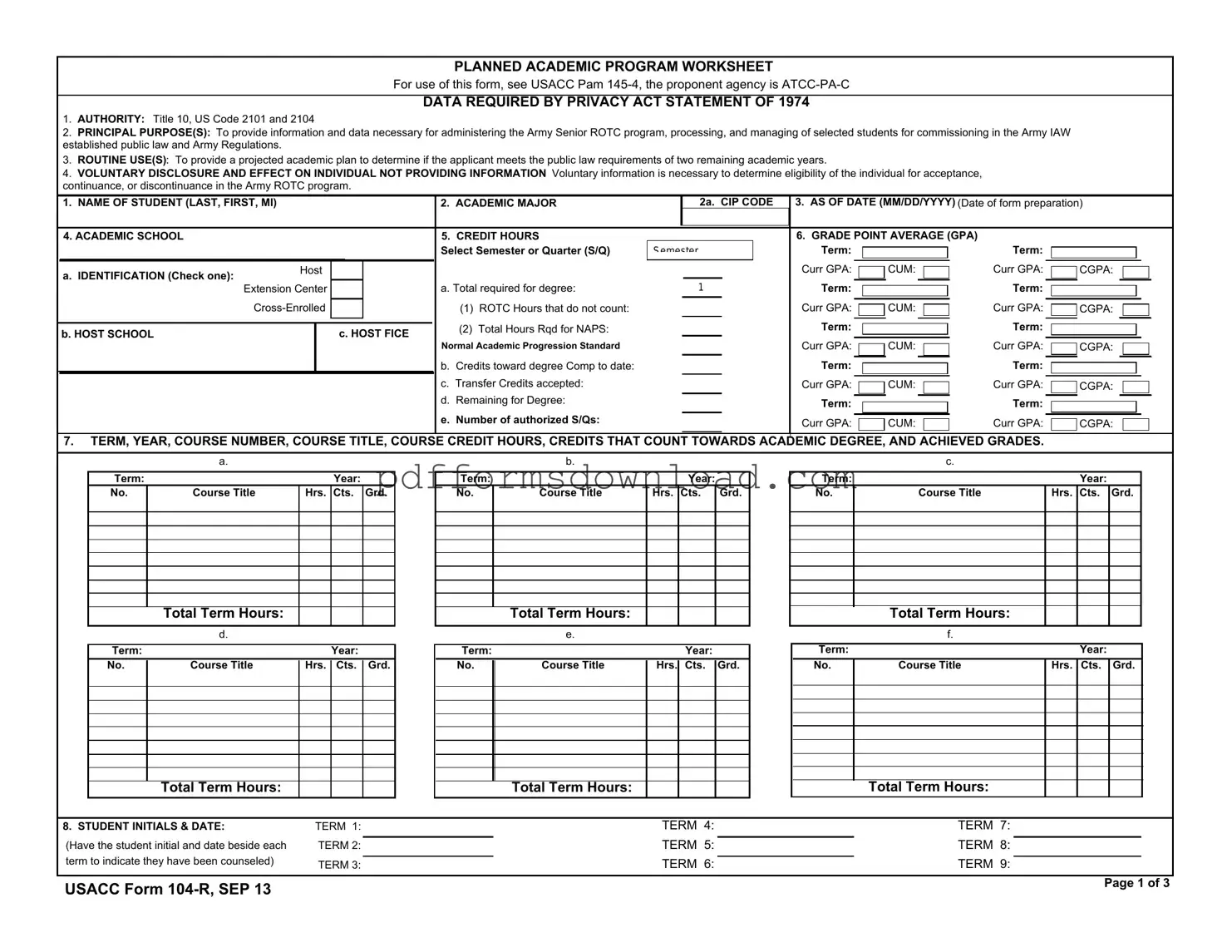What is the purpose of the 104 R form?
The 104 R form, also known as the Planned Academic Program Worksheet, serves a critical role in the administration of the Army Senior ROTC program. It collects essential information about students, helping to assess their eligibility for commissioning in the Army. By outlining a projected academic plan, the form ensures that applicants meet the legal requirements for completing their degree within the specified timeframe. This systematic approach facilitates the management of selected students and supports their academic journey.
Who needs to fill out the 104 R form?
Any student participating in the Army ROTC program who is seeking to commission in the Army is required to complete the 104 R form. This includes cadets who are currently enrolled in the program and those who are applying for acceptance. The form must be filled out accurately to reflect the student’s academic major, course load, and progress toward degree completion. It is crucial for ensuring that the student remains on track to fulfill their academic and military commitments.
What information is required on the 104 R form?
The 104 R form requires various pieces of information to provide a comprehensive overview of a student’s academic status. Key details include the student's name, academic major, credit hours completed, and current grade point average (GPA). Additionally, students must list the courses they plan to take, including course titles, credit hours, and grades achieved. This information helps advisors and administrators evaluate the student's academic plan and ensure compliance with ROTC program requirements.
What happens if a student does not provide the information requested on the 104 R form?
Failure to provide the necessary information on the 104 R form can have significant consequences for the student’s standing in the ROTC program. Since the information is vital for determining eligibility for acceptance, continuance, or discontinuance in the program, incomplete submissions may result in delays or denial of participation. It is essential for students to understand that providing accurate and complete information is not only a requirement but also a key factor in their academic and military success.
